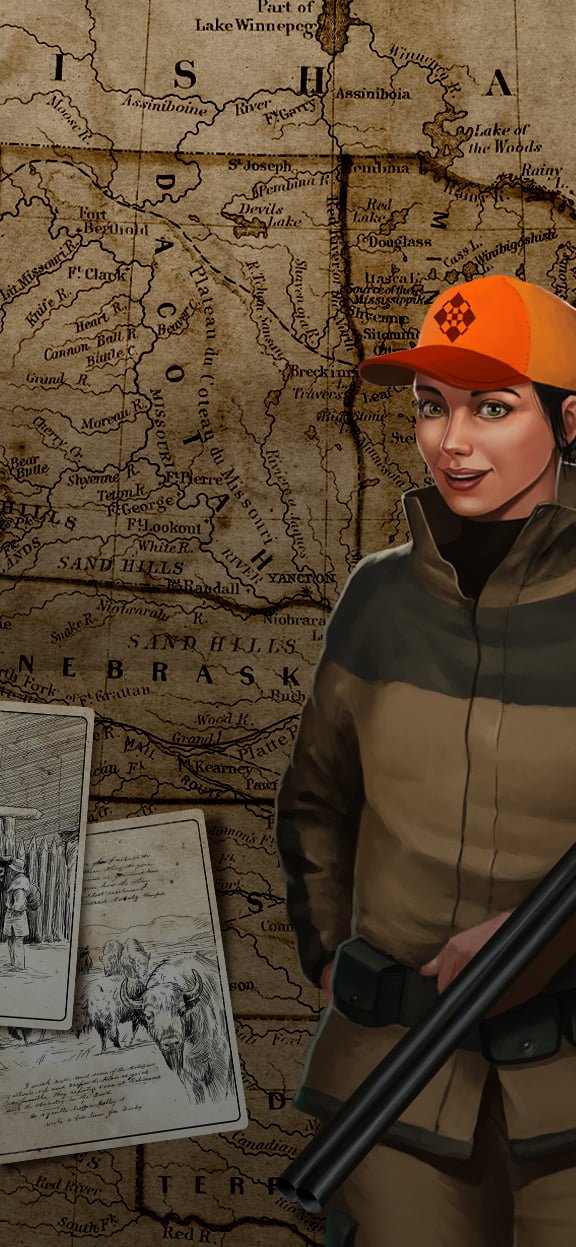



Often mockingly referred to as “toilet games,” they are thought of as nothing more than just “games for a while, puzzles or time killers. But even this category is ripe with widely known titles – Angry Birds, Candy Crush Saga, or Pokémon Go, to name just a few. Are they just small and simple games? Are mobile games played predominantly by children? We busted these and other myths with Product Owners Łukasz Modliński and Michał Kopeć and Game Designer Eliza Chyży.
Polish games producers took the world stage by the storm with such household names as The Witcher, Dead Island, Bulletstorm, or Frostpunk, but the Polish gamedev industry is much more than just large AAA productions. The world of games includes mobile games as well, played by more gamers than console and PC games altogether. It is a rapidly growing industry, but whenever we hear that somebody produces games, we tend to think of large console and PC productions – and what about mobile games? We believe that such games are good for beginners… So how is it with mobile games? We decided to fact-check a few assertions.
Myth #1 The plot isn’t important in mobile games
Eliza: This depends on the target of our game. Ten Square Games’ two 2020 productions were directed to women, which is why they have a much more developed plot than other of our games. According to research, women are more concentrated on the plot, and it is one of the factors that may influence their retention.
Michał: Men also have their preferences; there aren’t two identical gamers. Everyone has different tastes; somebody is a fan of shooting, some person might be into fishing, yet someone else may be mad about cars. Before deciding which plot would be the best, we need to ask potential players about their opinion and conduct market research. However, it is important to realize that immersing in the plot on a small screen is much harder than in the case of PC or console games.
Eliza: Games production and the entire process depend on the target of a particular title, and the plot is not always our main point of departure. If we believe that a story might be an important foundation of a given game, we invest more time and resources in its development.
Myth #2 Mobile games are nothing more than small and simple games
Michał: This depends on how well developed a given product is. If we are in the beginning and all we have is an idea or a prototype, and we want to test its viability – we need a team of 3-4 people. Every stage of a game’s development requires more content, making teams grow bigger. Why? Because we need more graphics, models, and mechanics. At this stage, we devise a game development plan and start adding new events because, in mobile games and free2play productions, it is important that new content is added regularly. And to do it we need people who can deliver it within a specified deadline.
Łukasz: I think the best answer to this question is the size of our teams. In our portfolio, we have games produced by teams of 10 to 50 people. My team consists of 25 people.
Myth #3 Creating free to play games is easy
Michał: It is true that creating such a game is not difficult; anyone can do it after watching a few “how to create a game” tutorials. It is, however, difficult to create a game that will earn money. Games developed according to this model are popular in many markets, but they are governed by different rules. And because of that, it’s reasonable to determine the target group and develop a game that would meet their requirements.
Producing games is also about a designer’s maturity – when I was a beginner, I wanted all my projects to be complete, tested, well-thought, and not until I had satisfied myself that they met those criteria was I ready to present them to others. As I grew more experienced, I learned that mistakes are inevitable. Before it had dawned on me, I would have never predicted that I, the creator, could make any mistakes because I would expect my game to be perfect. After consulting others, I would often realize that my idea can be improved. This brings us to another key aspect: teamwork. It is crucial that game creators present their work to others and gather feedback early because the more mature production is, the more effort will be required to modify it.
Eliza: It is like building the Death Star. Being a mature designer means that – from the perspective of a product, you always want to verify your hypothesis when you are creating a game or a feature. Some of the questions that need to be answered when working on a game are: how much time do we want to spend on it? How many people will work on it? How large does the game or its increment need to be to decide whether we want to invest in it?
Myth #4 All mobiles games follow the same pattern
Eliza: Yes and no. Mobile games are very diversified on the one hand, but they do have a lot in common on the other. Why shouldn’t we use some elements of an existing and successful game to create something new? This is how modern role-playing games have evolved. Hundreds of new games are launched into the market every month, but not all of them are successful.
Myth #5 Do game designers conceive games? What exactly do they do?
Eliza: Many people believe Game Design is nothing more than just conceiving a game. Anyone can come up with an idea for a game, but the role of a Game Designer is to describe the vision by means of consistent rules of the game. In other words, a Game Designer is responsible for designing the rules of a game and interactions between the gamer and the product.
Łukasz: The number of rules depends solely on the gamer. But if games are supposed to entertain our audience for longer, we need more rules and more depth. It would be an oversimplification to say that more playable games have more complex sets of rules. There are many easy games that are enjoyable to play.
Michał: I think it’s important to say that we don’t create games for ourselves. We create games for players, who constitute a very diversified audience. But games, especially mobile, should be accessible – every owner of a smartphone should be able to download it, start it, and play. Other layers may be added further down the road. Once a player has played for some time, they may be able to unlock new functionalities, which will make their immersion in the game more fluent. Designing the gamer journey is also a responsibility of a Game Designer.
Myth #6 A good idea is a recipe for success
Eliza: As I’ve already mentioned, everyone can have an idea – we all do. But the most important thing is how we sell the idea to our client, i.e., a gamer.
Łukasz: There are many games owing their success to being good and noticed. But there are just as many games that are successful thanks to a well-thought and carefully planned marketing strategy. Some existing games suddenly gain popularity. Such was the case of Among Us, a game promoted by two streamers. Although the game had been on the market for almost two years, it became popular among gamers in 2020.
You can also observe the market, follow the trends and watch genres that attract more gamers. There are many factors in forecasting whether a game is going to be a hit. For example, you can collect data from a game, gather feedback from gamers (who often share their opinions) and say how you feel about the game. So if you want to create a successful game, spend some time looking for a market gap to create a game no one has.
Myth #7 Mobile games are only for children
Łukasz: Our blockbusters are played by people well beyond school age. I believe that our company has proven that it pays off to create games for an older audience.
Michał: There are a lot of games that became an overnight success among both children and adults. Everyone knows such titles as Pokemon or Angry Birds.
Eliza: Women are also keen on playing mobile games, and producers perceive them to be an important target group.
Myth #8 Is gamedev an industry for nerds?
Michał: Yes!
Eliza: Yes, absolutely! Legend has it that somewhere there’s a company that doesn’t have a game lover on board, but it’s obviously rubbish.
Łukasz: Our developers play in music bands, do sports, are passionate about graphic design, and have many other hobbies. And it’s worth remembering that it isn’t just developers. TSG employs many artists, people working in support teams – you will definitely find many “normal” people in our company.
Myth #9 Only developers, graphic designers and game testers can work in the gamedev industry
Eliza: No, definitely not. You may be a graphic designer, you can work in marketing, HR. There are a number of roles supporting and helping dev teams in their work, so there are jobs for many people who do not specialize in IT and graphic design.
Myth #10 No/very few women work in the gamedev industry
Eliza: Not true. And the number of women working in this industry, in different positions, is constantly growing. According to another myth, the only women working in this industry are graphic designers. It’s definitely not true. Since I joined TSG 3 years ago, many female game designers and developers have entered the job market. We’re growing in numbers, and gamedev is definitely an industry many women will find attractive.
The article was originally published on justgeek.it, portal on 19th of January 2021.

Have you ever wondered how mobile games are created? Which skills and what mindsets drive…
read more
Is working as a developer in the gamedev sector different from working in other branches…
read more
“Services” is a broad name for a group of seven sub-teams: Support, VIP, Quality Assurance,…
read more
Fishing Clash isn't just our flagship game; it's a big artistic endeavor for our art…
read more